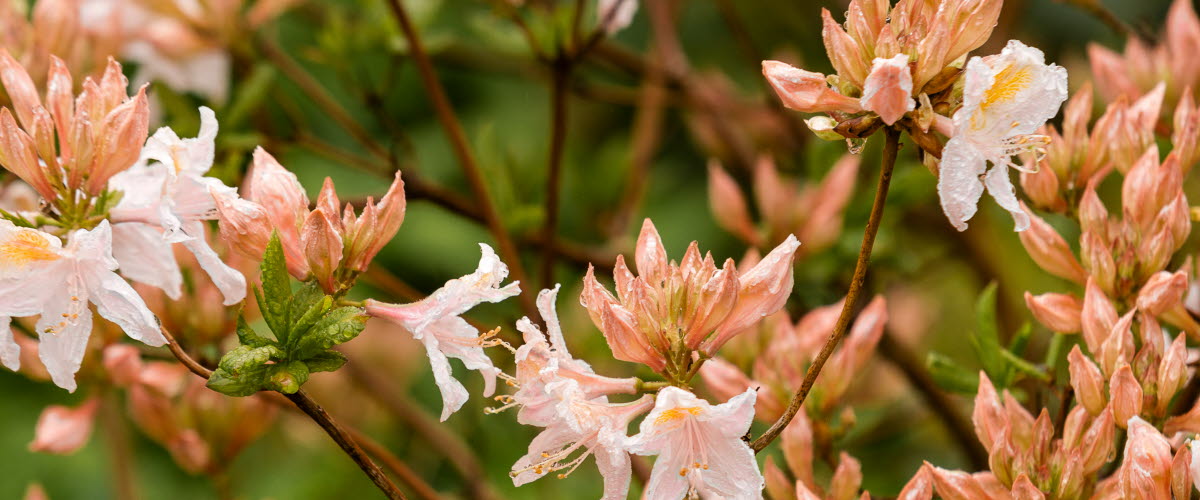Uddevalla
Uddevalla is a city rich in parks and green oases. Not so big and not so famous, perhaps, but probably as nice and enjoyable. Well worth visiting.
MARGERETEGÄRDEPARKEN
In the city center you will find Margeretegärdeparken, which is the city's grandest park. The park is named after councilor Jöns Koch's wife Margareta. In 1910, Margretegärde became an official park. But it was not until 1919 that the area was planned and laid out as a park.
The task went to city gardener C. A. Andersson, who transformed the old sports field into a park worthy of the name, a real city park.
Andersson's main idea was to reinforce Margretegärde's rectangular shape. Minor changes have been made to the park over the years, but Andersson's main idea remains. Diagonal footpaths run diagonally across the southern and northern parts of the fence. The center is marked with a large round fountain with plantings and park sofas. In the northern part there are two playgrounds surrounded by protective shrubbery.
In 1949, a statue, "Girl with a braid", was placed in the middle of the fountain. In 1974, a new music pavilion was built.
Margretegärde was for a long time an open and airy park dominated by gravel paths and colorful plantings, all surrounded by young lime trees. Today, bushes and trees have grown up and transformed the park into a welcoming and leafy oasis surrounded by mighty linden curtains. A place that offers both sun and shade, but above all quiet peace.
HASSELBACKEN
Hasselbacken is probably the city's oldest public park to a large extent. Hasselbackshuset was built in 1814 and became the square's new "south facade". A large garden was laid out for the house, facing both the square and Bäveån.
When the owner of the house, merchant Hasselgren, went bankrupt in 1875, the city bought the house and plans were made to convert the garden into a public park. The changes happen quickly. On postcards from the 1910s and 1920s, you can see how the front garden has been decimated into a small triangle in front of the house's entrance and that a group of firs has been allowed to grow tall next to the house.
In 1905, the last of the shacks were demolished, the garden was extended down towards Bäveån and the entire area was planned as a park by city gardener C. A. Andersson. The park in Hasselbacken soon grew into a leafy and green oasis in the middle of the city and was immediately appreciated by the headland residents. 20 years later, Hasselbacken was extended towards the church, to create a pleasant connecting road between the church and the park. The church slope down towards the river was completely terraced. Remains of foundations and walls were found. The stone has been reused in new walls and stairs but also as filling material. In 1925, a bird pond was arranged below Strömberget where various swimming birds were implanted. Expansions and improvements have subsequently been made in many stages.
As a final step in the expansion of Hasselback Park, the works in Dyrehaven can be seen: walking path, planning of a new granite quay and renovated bird pond. In 1961, the bridge connecting the two parks was inaugurated.
REGEMENTSPARKEN
Just east of the center of Uddevalla is the regimental park, which is located in a hilly, partly very dramatic landscape in direct connection to Bohuslän's defense museum. Bohuslän's Regiment moved in 1913 from Backamo to Uddevalla. A croft was moved from Solberga parish to the regiment. The cottage was placed next to the gentle slope down towards Bäveån, on land that was purchased in 1920 precisely to give the small museum a suitable setting.
The then recently retired city gardener C. A. Andersson helped lay out the Regimental Park, which was inaugurated in 1921. Over time, the park was equipped with both a dance floor, the Rotrundan, and an outdoor stage in the form of an amphitheater and became immensely popular.
The regimental park is located in a hilly, partly very dramatic landscape, next to a narrow part of Bäveån. The park is dominated by undulating grassy areas under mighty hanging birches and huge bloodwood. In the middle of the park is a memorial stone for the Royal Bohuslän Regiment 1661-1961 rest. When I17 was shut down in 1992, Regimental Park was taken over by a friendly association. Through the association, the park has been supplemented with a museum, which tells the defense history of Bohuslän.
GUSTAFSBERG
Gustafsberg is usually named as Sweden's oldest seaside resort, but long before that, the place, i.e. the farm, was famous for its sour well and garden.
Gustafsberg is an excellent example of the early 19th century pastoral naturalism. The bare strip of sea, the grim high mountain or the black forest were extreme types of landscape that cultivated man avoided. The "accepted" natural spaces would consist of cultivated land in various ways, preferably arranged in the property landscape or its vicinity, in the garden or park. The unknown was terrifying. Hardships could be coped with wearing glacé gloves and sweeping skirts or bonjour and top hat.
Today, the walkways are modified according to people's movement patterns in the park. The tree population is naturally sparse. However, the majority of trees are of the same age and size. I am still there, but chestnut dominates. When the sun casts long shadows, one can sense the contours of covered flower beds and footpaths. The semi-circles outside the restaurant have been replaced with a small music pavilion behind an open gravel court. Today, the plantings are concentrated at the Snäckan café and the summer residences.













